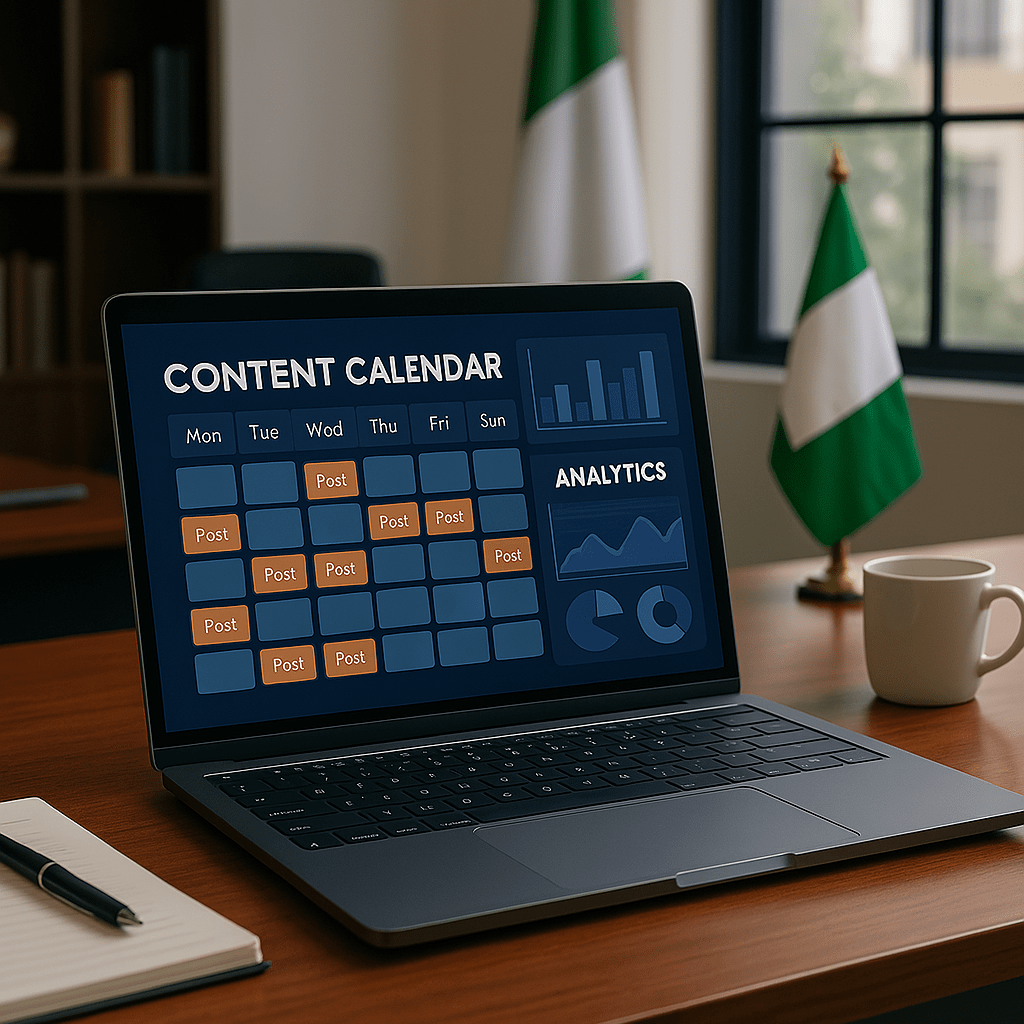Content Strategy for Businesses: Plan, Create & Measure for Brand Growth
Learn how to build a content strategy from scratch—audience research, SEO, content calendar, ROI tracking, and free templates. Start scaling your brand today! This is your step-by-step guide to creating a content strategy that drives traffic, builds trust, and fuels growth.
Table of Contents
1. Why You Need a Content Strategy
Content without strategy is like driving without a map—you’ll waste time, money, and energy. Here’s why it matters:
72% of marketers say content marketing increases engagement and leads (HubSpot, 2023).
A documented strategy makes you 397% more likely to succeed (Content Marketing Institute).
It aligns your team, saves resources, and turns random posts into a growth engine.
Example:
Skincare brand GlowLab doubled website traffic in 6 months by shifting from sporadic blog posts to a strategy focused on “skincare routines for busy professionals.”
2. Phase 1: Research & Audience Insights
Step 1: Define Your Brand’s Core Purpose
Ask:
What’s your mission? (Example: “Empower small businesses to automate workflows.”)
What makes you unique? (Example: “We combine AI with 1:1 coaching.”)
Step 2: Create Audience Personas
Build profiles using demographics + psychographics:
| Persona: Busy Entrepreneur Brenda |
|---|
| – Age: 35–45 |
| – Pain Points: No time for marketing |
| – Goals: 2x leads without hiring staff |
| – Content Preferences: Quick video tutorials, case studies |
Pro Tip: Use surveys or social polls to validate assumptions.
Step 3: Competitor Analysis
Tools: SEMrush, Ahrefs, BuzzSumo.
Look for:
Their top-performing content (e.g., viral blogs, YouTube videos).
Gaps they’re missing (Example: No tutorials for advanced users).
Step 4: Audit Existing Content
Sort content into:
Keep: Evergreen pieces (update if needed).
Refresh: Outdated stats or broken links.
Retire: Irrelevant or underperforming posts.
3. Phase 2: Set Goals & Choose Content Types
SMART Goals
Specific: “Increase organic traffic by 50% in 6 months.”
Measurable: Track via Google Analytics.
Achievable: Start with 2 blog posts/week vs. 5.
Match Content Types to Goals
| Goal | Content Types |
|---|---|
| Brand Awareness | Infographics, Reels, Podcasts |
| Lead Generation | Ebooks, Webinars, Email Courses |
| Customer Retention | Case Studies, Loyalty Tutorials |
Pro Tip: Repurpose one piece into multiple formats. A blog can become a YouTube video, Instagram carousel, and LinkedIn article.
4. Phase 3: Build Your Content Calendar
Tools to Use
Free: Google Sheets, Trello.
Paid: CoSchedule, Airtable.
Sample Calendar Structure
| Date | Topic | Format | Platform | Keyword | CTA |
|---|---|---|---|---|---|
| March 5 | “5 Time-Saving AI Tools” | Blog | Website | “AI for small biz” | Download free toolkit |
| March 8 | Behind-the-Scenes Reel | Video | N/A | Follow for more tips |
Pro Tip: Batch-create content (e.g., write 4 blogs in one day).
5. Phase 4: Create & Optimize for SEO
SEO Checklist
Keyword in title + first 100 words.
Header tags (H2, H3) for structure.
Internal links to related posts.
Alt text for images (Example: “woman-using-ai-tool-laptop”).
Tools:
Keyword Research: AnswerThePublic, Ubersuggest.
Optimization: Yoast SEO, SurferSEO.
Writing Tips
Hook formula: PAS (Problem, Agitate, Solve).
*“Struggling to keep up with social media? You’re not alone. 68% of marketers feel overwhelmed. Here’s a 10-minute daily fix.”*
6. Phase 5: Distribute & Promote
Owned Channels
Blog, email newsletter, YouTube.
Earned Channels
Guest posts on industry sites.
Collaborate with micro-influencers.
Paid Channels
Boost top-performing posts on Meta/Google.
Retarget visitors with personalized ads.
Pro Tip: Re-share evergreen content every 6–12 months.
7. Phase 6: Measure & Iterate
KPIs to Track
| Metric | Tool | Goal |
|---|---|---|
| Organic Traffic | Google Analytics | +30% MoM |
| Social Shares | Hootsuite | 50 shares/post |
| Conversion Rate | HubSpot | 5% email sign-ups |
Pro Tip: Hold quarterly reviews to tweak your strategy.
Final Thoughts
A content strategy isn’t a one-time project—it’s a cycle of plan, create, measure, repeat. Start small, stay consistent, and watch your brand grow.

